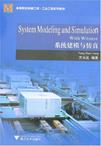系统建模与仿真
2007-8
浙江大学
方水良
235
397000
Computer simulation is a discipline of designing a model of an
actual or
theoreticalphysicalsystem,executingexperimentsonthecomputer,
analyzing the simulated outputs, and optimizing the system. It is a
powerful tool that is often applied to the design and analysis and
optimization of complex systems.
This book aims to give a fundamental knowledge about the system
concepts,systemmodelingmethodology,andcomputersimulation
technology. The main contents of the book are about the technology
and application of the Witness simulation software of the Lanner
Groups. The ACD (Activity Cycle Diagram) based system analysis and
modeling, and the computerized modeling with the Witness' Elements,
Rules, Actions, etc.are discussed. Some examples have presented and
explained in order to make the contents more understandable.
This manuscript is firstly prepared in 2005. After two years'
teaching in the Industrial Engineering classes of Zhejiang
University, several thorough modifications have been made and this
is the third vcrsi0n.
This book is hoped useful for the Chinese universities to have a
bilingual course about the System Modeling and Simulation, and also
useful for the users of the Witness software.
Chapter 1 Introduction to System, Modeling and Simulation
1.1 System
1.2 System Modeling
1.2.1 Physical model
1.2.2 Mathematical model
1.2.3 Graphical model
1.3 System Simulation
1.4 Computer Simulation
1.4.1 Advantages
1.4.2 Disadvantages
1.4.3 Classifications
1.5 Simulation Execution
1.5.1 Manual simulation
1.5.2 Programming with general purpose computer language
1.5.3 Programming with special simulation language and
simulator
1.6 Development of Simulation
1.6.1 The late 1950s and 1960s
1.6.2 The 1970s and early 1980s
1.6.3 The late 1980s and 1990s
1.6.4 The present and future
1.7 General Steps for Simulation Project
1.7.1 Bound the system based on the objective and
preconditions
1.7.2 Build the logical or conceptual model
1.7.3 Build the computer model based on the conceptual model
1.7.4 Verify and validate the model
1.7.5 Collect data and information
1.7.6 Experiment on the computer model
1.7.7 Analyze outputs
1.7.8 Summarize project
Questions
Chapter 2 Discrete Event System Modeling
2.1 Discrete Event System
2.2 General Methodologies for DES Modeling
2.2.1 Event-oriented approach
2.2.2 Process-oriented approach
2.2.3 Activity-oriented approach
2.2.4 Discussion about the three approaches
2.3 More about Activity Cycle Diagram
2.4 Draw Activity Cycle Diagram
2.4.1 Specify the model domain
2.4.2 List all entities and their key attributes
2.4.3 Define individual closed cycles
2.4.4 Merge the individual activity cycles
2.4.5 Verify and validate the ACD diagram
2.5 Extended Convention for Activity Cycle Diagram
2.6 Use ACD in Simulation Study
2.7 DES Modeling in Witness
Questions
Chapter 3 Simulation and Manual Simulation
3.1 Example of a Simple Service System
3.1.1 A bank system
3.1.2 Objectives for system evaluation
3.2 Methods for System Evaluation
3.2.1 Scientific guessing
3.2.2 Queuing theory
3.2.3 Simulation
3.2.4 Calculation with the help of Excel
3.3 General Terminologies of Simulation
3 3.1 Parts (Customers)
3 3.2 Resources
3 3.3 Attributes
3 3.4 Variables
3 3.5 Queues
3 3.6 Statistical accumulators
3 3.7 Events
3.3.8 Simulation clock
3.3.9 Randomness in simulation
3.4 Simulating Algorithms
3.4.1 Event-oriented simulation
3.4.2 Process-oriented simulation
……
Chapter 4 Witness Startup
Chapter 5 Witness Elements
Chapter 6 Rules and Actions
Chapter 7 Functions and Distributions
Chapter 8 Witness Programming
Chapter 9 Winess Practices
References
Acknopwledgements

感觉要是有个中文配套就好啦